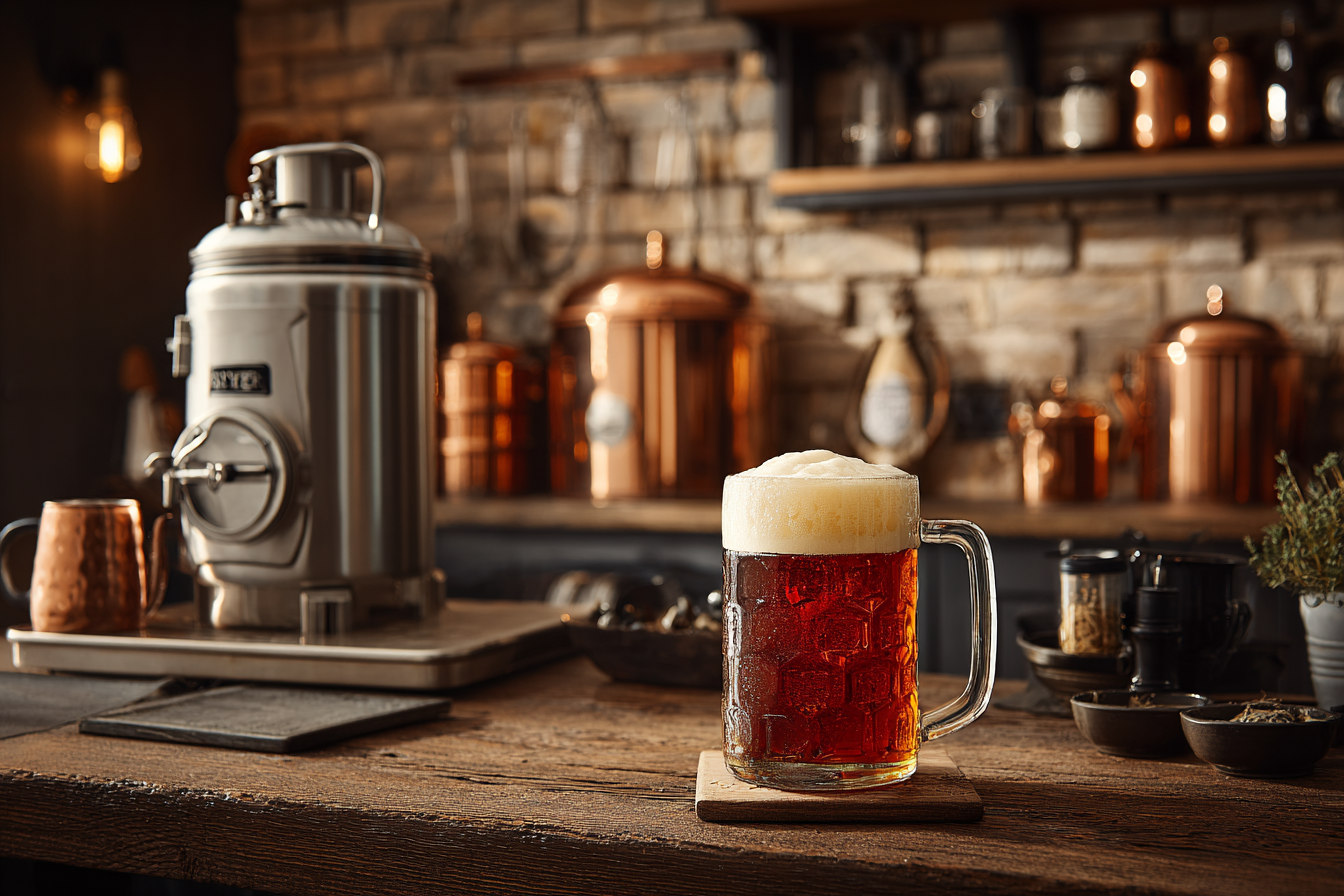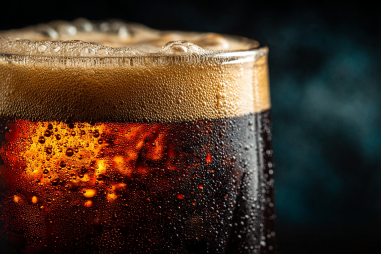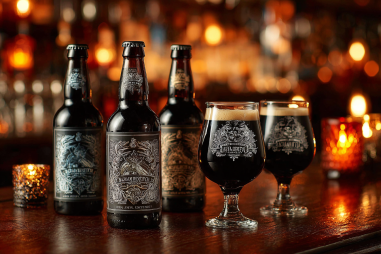Irish Red Ale is a beloved beer style known for its smooth, balanced maltiness, subtle caramel notes, and the signature reddish hue. If you’re an aspiring homebrewer wanting to craft your own authentically delicious Irish Red Ale, you’ve come to the right place. Brewing this style at home can be incredibly rewarding, and with the right approach and attention to detail, you’ll be able to capture all the nuances that make Irish Red Ale so iconic. In this guide, we’ll walk through essential tips—from selecting the right ingredients to perfecting fermentation and beyond—to help you brew a truly exceptional Irish Red Ale in your own kitchen.
Preparing Your Homebrew Setup
Before diving into your brew day, it’s crucial to have a clean, well-organized brewing environment. Your setup doesn’t need to be complicated, but it should be efficient and sanitary to ensure the best results.
Start by thoroughly sanitizing every piece of equipment you’ll use—fermenters, brew kettle, spoons, and bottles. Sanitization helps prevent contamination and off-flavors. Invest in a good no-rinse sanitizer designed for homebrewing to make this process easier.
Set up your brewing area so that all ingredients and equipment are within easy reach. This preparation streamlines brewing and minimizes mistakes. Consider organizing labels for your ingredients and measuring tools in advance, so your process remains smooth and consistent. Also, having a reliable thermometer and hydrometer handy is essential for monitoring mash temperatures and fermentation progress.
Choosing Ingredients
The ingredients you select will make or break your Irish Red Ale, so choose them thoughtfully to achieve that classic profile.
Malt Selection
A good Irish Red Ale starts with the malt bill. Base malt such as pale malt or Maris Otter provides a solid foundation. To get that distinctive red color and mild caramel sweetness, include specialty malts like crystal malt (around 40–60 Lovibond) and a small percentage of roasted barley. Roasted barley is key for adding the subtle roasted notes and balancing sweetness without making the beer too bitter or dark.
Hops
Irish Red Ales are typically low to moderately hopped. Use traditional English or Irish hop varieties such as East Kent Goldings, Fuggle, or Goldings. Aim for a gentle bitterness level, generally in the 20–30 IBU range, which supports the malt character without overpowering it.
Yeast
Selecting the right yeast strain is critical. Irish Red Ale yeast strains are usually clean-fermenting English ale yeasts that produce subtle fruity esters and a smooth finish. Popular options include Wyeast 1084 or White Labs WLP004. By choosing the right yeast, you ensure that the malt flavors shine through without excessive phenols or diacetyl.
Water Profile
Water chemistry can subtly impact your beer’s flavor and mouthfeel. Irish Red Ales typically benefit from a balanced water profile with moderate sulfate to chloride ratios, which accentuate malt sweetness while controlling hop bitterness. If you use tap water, consider adjusting its mineral content with brewing salts or use reverse osmosis water for more control.
Controlling Fermentation
Fermentation is where your wort transforms into flavorful beer, so managing it carefully is essential for a successful Irish Red Ale.
Maintain a steady fermentation temperature that suits your yeast strain—usually between 65–70°F (18–21°C) for English ale yeasts. Avoid temperature swings to prevent the creation of off-flavors, such as fusel alcohols or unwanted esters.
Allow the yeast adequate time to fully ferment the sugars, typically around 1 to 2 weeks. Using a fermentation lock or airlock helps keep the environment anaerobic, reducing contamination risk. For cleaner flavors, consider performing a diacetyl rest near the end of fermentation by raising the temperature a few degrees for 2–3 days—this helps yeast clean up buttery off-flavors naturally.
Troubleshooting Common Issues
Even experienced brewers encounter hurdles, but knowing how to identify and correct problems can mean the difference between a great batch and a wasted one.
- Off-flavors: If you detect sour or medicinal notes, this often indicates contamination. Ensure thorough sanitization and prevent oxygen exposure during fermentation and bottling.
- Stuck fermentation: This can be caused by low yeast health or inadequate temperatures. Pitch fresh, healthy yeast and keep the fermentation temperature steady.
- Too much bitterness: Over-hopping can mask malt flavors. Measure your hops carefully and consider late hop additions or whirlpool hopping for aroma without harsh bitterness.
- Pale or dull color: Adjust your specialty malt quantities or check your mash temperature to optimize color and body.
Enhancing Color and Flavor
Achieving the beautiful copper-red color and rich malt character is part of the charm of Irish Red Ale. Here are a few ways to enhance these features.
- Adjust malt ratios: Increase the amount of crystal malts or add a touch of Munich malt for extra depth.
- Use roasted barley sparingly: Just a small amount adds the trademark red tint and slight roast complexity without overpowering the beer.
- Mash temperature control: Mashing at slightly higher temperatures (around 154–156°F or 68–69°C) increases malt sweetness and body, amplifying the beer’s smoothness.
- Consider adding specialty grains: Carafa malt or amber malt can add subtle toasty notes and deepen the color further.
Bottling and Conditioning Advice
Proper bottling and conditioning steps are vital for carbonation, flavor development, and overall beer stability.
Before bottling, ensure fermentation is complete by measuring stable specific gravity readings over a few days. Add the correct amount of priming sugar based on your desired carbonation level—Irish Red Ales typically have moderate carbonation.
Use sanitized bottles and caps, and fill carefully to minimize oxygen exposure, which can cause stale flavors. Once bottled, store your beer at room temperature for at least 2 weeks to allow natural carbonation and flavor maturation.
After conditioning, chill your bottles before serving to help settle yeast and improve clarity. Irish Red Ale is best enjoyed fresh but can also age gracefully for a few months as flavors meld.
Mastering Your Irish Red Ale
Brewing your own Irish Red Ale is a rewarding journey that combines science, art, and patience. Pay close attention to your setup, ingredients, and fermentation conditions to bring out that classic malt-forward, subtly sweet profile with a gorgeous reddish hue.
Remember, practice and experimentation are part of the fun. Each batch teaches you something new, enabling you to fine-tune your process and recipes. Keep detailed notes on what works and what doesn’t, and don’t hesitate to reach out to the homebrewing community for tips and inspiration.
With these brewing tips in your toolkit, you’re well-equipped to craft a delicious, well-balanced Irish Red Ale that you’ll proudly share with friends and family. So, gather your gear, brew with passion, and enjoy the wonderful world of Irish Red Ale!







